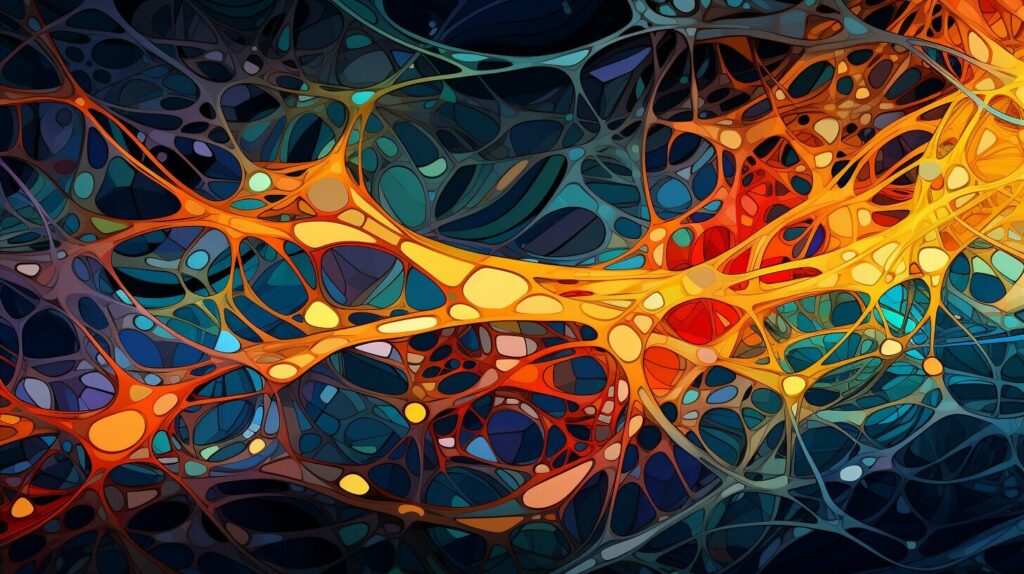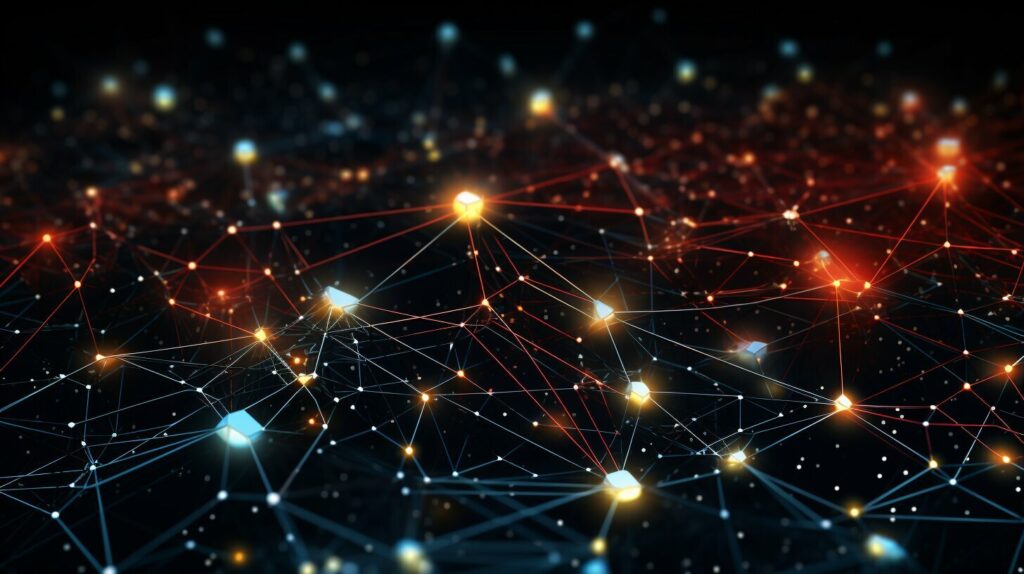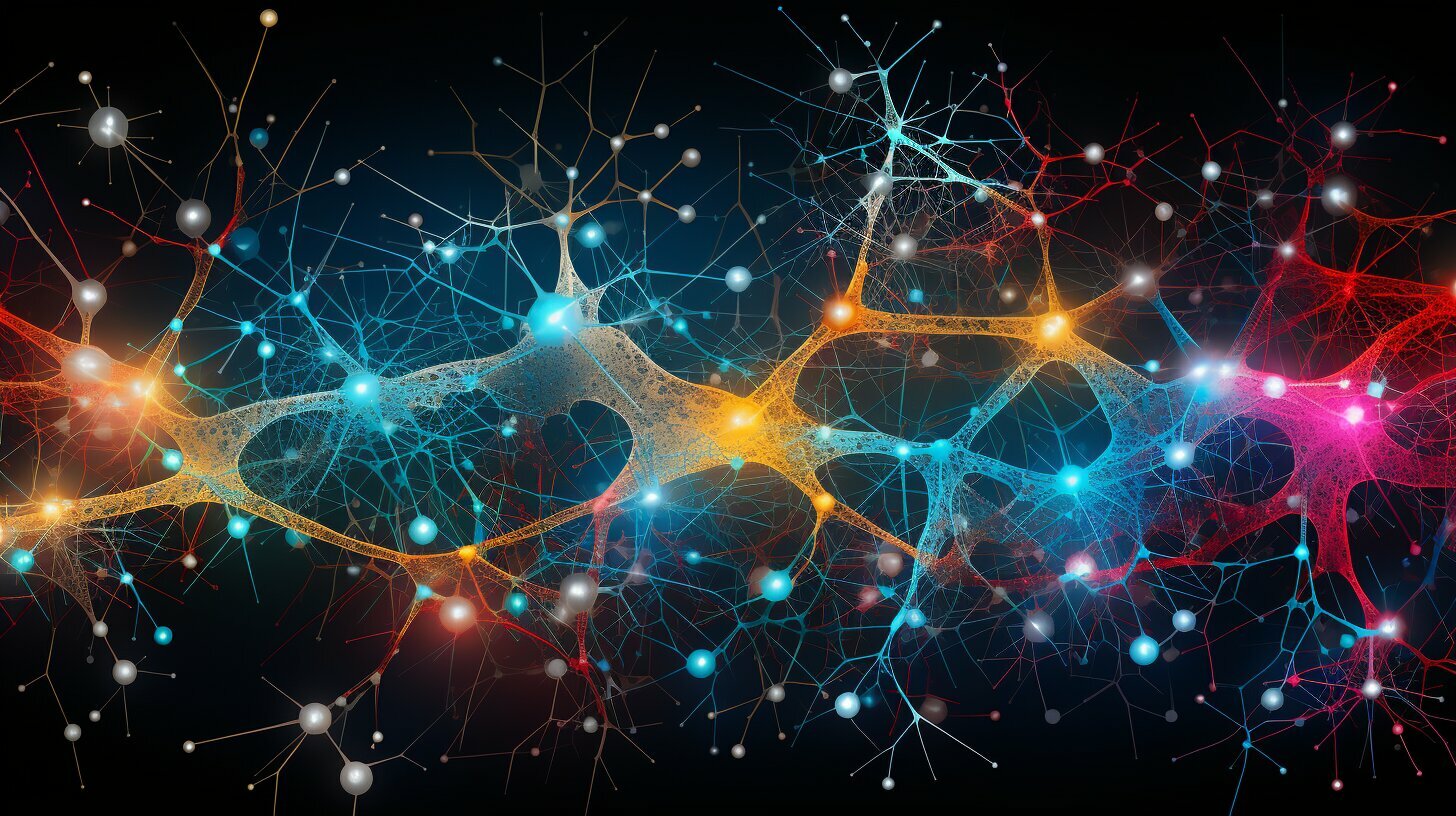Welcome to our article on the power of deep learning in modern technology. In today’s fast-paced world, artificial intelligence and machine learning have become increasingly integral to numerous industries. One of the key components of this technological revolution is deep learning, a subset of machine learning that utilizes neural networks to mimic human knowledge acquisition. Deep learning has revolutionized applications like computer vision, natural language processing, and data science, enabling automation of tasks that previously required human intelligence.
Deep learning models, powered by deep neural networks and convolutional neural networks, are trained using labeled data to create accurate predictive models. However, it’s important to note that deep learning models rely on significant computing power and large amounts of training data to achieve high levels of accuracy.
Key Takeaways:
- Deep learning is a subset of machine learning and artificial intelligence.
- It utilizes neural networks to perform classification tasks and recognize patterns in data.
- Deep learning is crucial in applications such as computer vision and natural language processing.
- Deep learning can automate tasks that require human intelligence.
- Large amounts of training data and computing power are necessary for deep learning models to achieve high accuracy.
What is Deep Learning?
Deep learning is a powerful subset of machine learning and artificial intelligence that utilizes neural networks to process and analyze complex data. It is a sophisticated technology that has revolutionized the field of data science and predictive modeling. By mimicking the way the human brain operates, deep learning systems can perform classification tasks and recognize patterns in various types of data.
The foundation of deep learning lies in neural networks, which consist of multiple layers of interconnected nodes. These networks are trained using labeled data, where the input data and the desired output are known. Through a process called backpropagation, the neural network adjusts its weights and biases to minimize the difference between the predicted output and the actual output, thus improving its accuracy over time.
Deep learning has numerous applications across industries. It is widely used in computer vision, where it can analyze and interpret images and videos. It is also applied in natural language processing, enabling machines to understand and generate human language. With its ability to automate feature extraction and learn from vast amounts of labeled data, deep learning has become a key technology in fields such as healthcare, finance, and autonomous driving.

Examples of Deep Learning Applications:
- Facial recognition systems: Deep learning algorithms power facial recognition technology used in security systems, social media platforms, and smartphone unlocking.
- Speech recognition: Virtual assistants like Siri and Alexa utilize deep learning to understand and respond to natural language commands.
- Medical diagnosis: Deep learning models can analyze medical images like X-rays and MRI scans to assist in the diagnosis of diseases.
- Recommendation systems: Online platforms use deep learning to personalize recommendations for users based on their preferences.
Deep learning is constantly evolving, with researchers and engineers exploring new techniques to improve its capabilities. It requires significant computational resources and large labeled datasets to train deep neural networks effectively, but its potential for solving complex problems and making intelligent predictions makes it a valuable tool in the field of artificial intelligence.
Why is Deep Learning Important?
Deep learning is a critical technology in today’s digital landscape. Its significance stems from its wide range of applications, including digital assistants, fraud detection, facial recognition, autonomous cars, and medical devices. The high recognition accuracy of deep learning models makes them invaluable in industries where safety and precision are paramount.
The Impact on Digital Assistants
Deep learning has revolutionized the capabilities of digital assistants like Siri, Alexa, and Google Assistant. By leveraging deep neural networks, these assistants have become more adept at understanding and responding to human language, enabling seamless interactions between humans and machines. Whether it’s answering questions, setting reminders, or controlling smart home devices, deep learning has enhanced the functionality and user experience of digital assistants.
Enhancing Fraud Detection and Facial Recognition
Deep learning plays a crucial role in fraud detection systems by analyzing large volumes of data and identifying patterns indicative of potential fraudulent activities. By training deep neural networks on historical data, these systems can quickly recognize outliers and anomalies, flagging suspicious transactions or behaviors. Similarly, deep learning is instrumental in facial recognition technology, enabling accurate identification and authentication for security purposes.
Advancing Autonomous Cars and Medical Devices
Autonomous cars rely heavily on deep learning to perceive and interpret the surrounding environment. Deep neural networks process data from various sensors, such as cameras and LIDAR, to recognize objects, detect pedestrians, and make informed decisions in real-time. In the medical field, deep learning contributes to the development of advanced diagnostic tools and treatment planning systems. By analyzing medical images and patient data, deep learning models can assist healthcare professionals in diagnosing diseases and tailoring treatment approaches.
In conclusion, deep learning’s importance lies in its ability to automate complex tasks, improve recognition accuracy, and enhance the efficiency of various systems. Its applications in digital assistants, fraud detection, facial recognition, autonomous cars, and medical devices highlight the significant impact it has on technological advancements. As deep learning continues to evolve, we can expect further innovations that will shape the future of these industries.

How Deep Learning Works
Deep learning works by utilizing neural networks with multiple layers of interconnected nodes to process and analyze data. These networks, inspired by the way the human brain functions, are trained using labeled data to create a predictive model.
Unlike traditional machine learning methods that rely on manually extracting features from the data, deep learning eliminates the need for feature extraction. The deep learning model automatically learns and identifies important features from the raw data itself, making it highly effective in tasks such as image recognition, natural language processing, and speech recognition.
“Deep learning eliminates the need for human-designed features and instead learns from raw data.” – Andrew Ng, AI researcher and co-founder of Coursera
To achieve high accuracy, deep learning models require a large amount of labeled training data. The more data available for training, the better the model can generalize and make accurate predictions on unseen data. Additionally, deep learning models require significant computing power for training purposes, as the training process involves numerous complex calculations and iterations.
By harnessing the power of neural networks and large-scale data processing, deep learning has revolutionized the field of machine learning and has enabled significant advancements in various industries, including healthcare, finance, and autonomous systems.

Table: Comparison of Deep Learning and Traditional Machine Learning
| Aspect | Deep Learning | Traditional Machine Learning |
|---|---|---|
| Data Representation | Raw data | Manually engineered features |
| Training Data | Large labeled dataset | Relatively smaller labeled dataset |
| Computing Power | High | Lower |
| Accuracy | High, especially with large datasets | Varies depending on feature selection and algorithm |
The table above highlights the key differences between deep learning and traditional machine learning. Deep learning excels at automatically learning features from raw data, making it highly accurate when trained with large labeled datasets. Traditional machine learning, on the other hand, relies on manually engineered features and may require less computing power but may not achieve the same level of accuracy.
In summary, deep learning works by utilizing neural networks to automatically learn features from raw data, eliminating the need for manual feature extraction. It requires large amounts of labeled data and significant computing power for training. The comparison table showcases the advantages of deep learning over traditional machine learning approaches, making it a powerful tool in various industries.
Deep Learning Methods
In the world of deep learning, several methods have been developed to improve model performance and prevent overfitting. These methods include learning rate decay, transfer learning, training from scratch, and dropout. Let’s take a closer look at each of these techniques:
Learning Rate Decay
Learning rate decay is a common approach used to optimize the training process in deep learning models. The learning rate determines how much the weights of the neural network are updated during the training process. With learning rate decay, the learning rate is gradually reduced over time. This adjustment allows the model to make smaller and more precise updates to the weights as it converges towards the optimal solution. By decaying the learning rate, we can prevent overshooting and improve the model’s generalization performance.
Transfer Learning
Transfer learning is a powerful technique that leverages pre-existing neural networks to improve the performance of a new model. Instead of training a deep learning model from scratch, we can use a pre-trained model that has been trained on a large dataset and has learned to recognize a wide range of patterns. By utilizing the knowledge gained from the pre-trained model, we can fine-tune it on a smaller dataset specific to our task. Transfer learning saves training time and computational resources while still achieving good performance.
Training from Scratch
In some cases, training a deep learning model from scratch is necessary. This approach involves collecting a large labeled dataset and configuring a network architecture suitable for the task at hand. Training from scratch allows us to have full control over the model’s architecture and training process. However, it requires significant computational resources and time to train a deep learning model from scratch. It is recommended when pre-existing models or transfer learning methods are not suitable for the specific task or dataset.
Dropout
Dropout is a regularization technique commonly used in deep neural networks to prevent overfitting. It randomly drops units and their connections during the training process, forcing the network to learn redundant representations. By doing so, dropout reduces the reliance on individual units and promotes the learning of more robust features. This technique helps improve generalization performance and reduces the risk of overfitting to the training data.
These deep learning methods provide valuable tools for improving model performance and addressing common challenges in deep learning. By effectively utilizing techniques such as learning rate decay, transfer learning, training from scratch, and dropout, we can enhance the accuracy and generalization capabilities of deep learning models.

| Method | Description |
|---|---|
| Learning Rate Decay | The learning rate is gradually reduced over time to optimize the training process. |
| Transfer Learning | Pre-trained models are leveraged to improve the performance of a new model. |
| Training from Scratch | A deep learning model is trained from scratch using a large labeled dataset. |
| Dropout | Randomly drops units and connections during training to prevent overfitting. |
Conclusion
Deep learning has emerged as a powerful tool in the fields of machine learning and artificial intelligence. By leveraging neural networks and vast amounts of labeled data, deep learning has revolutionized various applications. It automates the process of feature extraction, making it faster and more efficient compared to traditional methods.
With the continuous advancements in computing power and the availability of big data, deep learning has the potential to transform industries. Its high recognition accuracy is essential in critical applications such as autonomous cars and medical devices, where safety is paramount.
As we delve deeper into research and development, we can expect even more groundbreaking applications and advancements in deep learning. The combination of machine learning, artificial intelligence, and neural networks has opened up new possibilities for solving complex problems and improving the accuracy and efficiency of systems.
FAQ
What is deep learning?
Deep learning is a type of machine learning and artificial intelligence that imitates the way humans gain knowledge. It uses neural networks to perform classification tasks and recognize patterns in various types of data, such as photos, text, and audio.
Why is deep learning important?
Deep learning is important in data science as it can automate tasks that require human intelligence. It has applications in digital assistants, fraud detection, facial recognition, and more. Deep learning models can be trained using labeled data to create accurate predictive models.
How does deep learning work?
Deep learning works by using neural networks with multiple layers of interconnected nodes. These networks are trained using labeled data to create a predictive model. Through iterations and feedback, the model becomes more complex and accurate.
What are some deep learning methods?
Deep learning methods include learning rate decay, transfer learning, training from scratch, and dropout. These techniques help improve the performance and generalization of deep learning models.
How can deep learning be applied in different industries?
Deep learning has applications in various industries such as healthcare, finance, retail, and more. It can be used for tasks like medical diagnosis, fraud detection, recommendation systems, and image recognition.
What are the benefits of deep learning?
Deep learning automates feature extraction from data, eliminating the need for manual feature engineering. It can handle large amounts of data and learn complex patterns, resulting in improved accuracy and efficiency in various systems.











